|
 Secure Site
Secure Site
|
 |
Archive for the 'mindfulness practice' Category
 Meditation made easy Basic Breath Meditation
What is it?
The cornerstone of all meditation techniques, this practice centers on something we always do but rarely notice: breathing. “You do not have to do anything with your breath but observe it,” says yoga and meditation teacher Rosen. Eventually, you can work on changing your breath, and sending it into new areas of your torso. But at first, just become aware of each inhalation and exhalation; let your mind track how the breath moves, mapping where it goes to develop an understanding of your own unique “breathing identity.”
What’s it good for?
Use this meditation to get centered anytime and anywhere. “You can retreat into your breath whenever you’re feeling dull, tired or stressed out,” says Rosen.
How long does it take?
Start with 10 minutes at first, then work your way up to 15 and finally 20 minutes.
How do I do it?
 Meditation 1. Sit in a comfortable position with your legs crossed. Or lie on your back with your body straight and a firm pillow or rolled-up towel under your knees. Your arms should rest about 45 degrees from your torso.
2. Breathe quietly in and out through your nose. Feel each breath as it moves through your torso. Feel where in your body the breath is moving and where it is not.
3. Begin to notice how your breath changes as you focus on it, and how your awareness changes in turn. (Rosen likens this process to a feedback loop between the breath and “the witness,” who’s observing it.)
4. When your mind begins to drift, gently bring it back to your breath.
5. Begin to bring your breath into areas of your body that feel dull or “un-breathed.” Imagine your torso as a container, and try actively sending breath into the places it’s not reaching, such as your pelvis or the small of your back. Don’t force the breath, just allow it to follow your consciousness.
6. At the end of your session, wiggle your fingers and toes, then stretch your legs and arms. If you’re lying down, roll over to one side and pause before pushing up to a seated position. Roll up slowly, leading with your torso and raising your head last.
Use our unique “Zen Clock” which functions as a Yoga & Meditation Timer. It features a long-resonating acoustic chime that brings your meditation or yoga session to a gradual close, preserving the environment of stillness while also acting as an effective time signal. Our Yoga Timer & Clock can be programmed to chime at the end of the meditation or yoga session or periodically throughout the session as a kind of sonic yantra. The beauty and functionality of the Zen Clock/Timer makes it a meditation tool that can actually help you “make time” for meditation in your life. Bring yourself back to balance.
adapted from Naturalhealthmag.com By Frances Lefkowitz
Now & Zen – The Gong Meditation Timer Shop
1638 Pearl Street
Boulder, CO 80302
(800) 779-6383
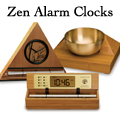 Meditation Timer with Gongs and Chimes 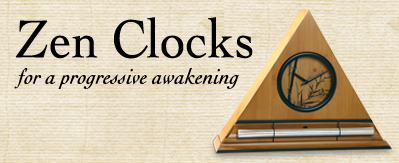 Meditation Timers and Alarm Clocks with Gentle Sounds
Posted in Meditation Timers, Meditation Tools, mindfulness practice
 White Orchid Zen is not my middle name. I apply obligation and pressure the way other people apply sunscreen—until it seeps through my pores. Then, my stress alarms start swirling like the red light on a police car: You’re late. The fridge is empty. The deadline was yesterday. Even on Sunday, when I lie, sarcophagus-like, under a pile of restful newspapers, at the back of my noggin I see the glow of the red light. My brain just won’t shut off to give me a blinking break from feeling like the cartoon character with her finger in an electrical socket, frazzled up to my fractured eyeballs. For once, I’d like to know just what all the stress is about. Why do our bodies churn like angry turbines? Is stress just some antiquated throwback we don’t need? Is its internal commotion helping or hurting us? Is it something we have no control over— or can we harness it, parceling it out only when we need its motivating force? I’m on a mission to answer these questions.
Stress, THE GOOD GUY
So, what exactly is this monster called stress that keeps me up at night and driven by day? For starters, it’s not a monster—or at least it’s not trying to be. Stress, in the short term, is my defender, says Gabor Maté, M.D., a physician in Vancouver, British Columbia, and author of When the Body Says No: Exploring the Stress-Disease Connection (Wiley). “Acute stress is simply a necessary self-protective mechanism—the body’s fight or- flight response,” he says. “An emotion like fear may trigger the response, but it’s a physiological reaction that you may or may not be aware of.” This fight-or-flight response was at its best for our forebears facing hungry lions. A stress episode then was a short—albeit complicated—burst, revving up every body system to win a battle or get away. My forebear’s brain—in particular the frontal cortex, the brain’s executive center—sent a red alert to the hypothalamus, the hormonal control center, triggering a flood of the stress hormones adrenaline and cortisol. “The cortisol elevates blood sugar levels, mobilizing energy for a quick escape,” says Maté. “The adrenaline provides more energy to fight.” At the same time, this cocktail of stress hormones prompts the heart to quadruple the amount of blood it pumps, from about 5 quarts to 20 quarts a minute, providing more energy. But the blood travels a different route, away from the skin, gut and kidneys to the muscles, so that energy can be used to fight or flee. Blood pressure, heart rate and breathing rates increase, the airways dilate, and the liver starts converting glycogen—the raw material of our body’s fuel—into glucose, or blood sugar, again for power to battle or retreat. In modern times, of course, we’re not confronting hungry animals. But our bodies react exactly the same way, say, if a car swerves into our lane or our child slips off the seesaw. Our entire body mobilizes to turn away from the feckless car or catch the falling child.
 Choose a Mindfulness Meditation However, despite these crucial—sometimes lifesaving—benefits of stress, most of us obsess about it like we do the bad neighbor we can’t get rid of. And so do the media, either telling us constantly how stressed out we are or giving us something else to stress about. “Every ad I see is for some illness or disability in the body and spirits,” says JudithOrloff, M.D., clinical professor of psychiatry at University of California, Los Angeles, and author of Emotional Freedom: Liberate Yourself from Negative Emotions and Transform Your Life (Three Rivers Press). “The media program us to be stressed out and sick.”
“Mindfulness” is the spiritual practice of being aware of your present moment. World famous Zen monk Thich Nhat Hanh has developed the use of a bowl-gong in a practice he calls the “mindfulness bell.” When you hear the sound of the mindfulness bell, you are invited to take a moment to breathe in and out and center yourself in the present. This practice allows the sound of the bowl-gong to periodically connect you to the peace and tranquility that resides inside you right now. This delightful practice reduces stress and improves your overall health.
Mindfulness practice, is increasingly being employed in Western psychology to alleviate a variety of mental and physical conditions.
Scientific research into mindfulness generally falls under the umbrella of positive psychology. Research has been ongoing over the last twenty or thirty years, with a surge of interest over the last decade in particular. In 2011, The Natural Institute for Health’s National Center for Complementary and Alternative Medicine (NCCAM) released the findings of a study wherein magnetic resonance images of the brains of 16 participants 2 weeks before and after mindfulness meditation practitioners, joined the meditation program were taken by researchers from Massachusetts General Hospital, Bender Institute of Neuroimaging in Germany, and the University of Massachusetts Medical School. It concluded that “..these findings may represent an underlying brain mechanism associated with mindfulness-based improvements in mental health. [From Wikipedia]
The Zen Timepiece can serve as a mindfulness bell in two ways: it can be set to strike on the hour (providing an hourly moment of stillness), or it can be set to strike at a programmed interval, such as every 20 minutes, or even every three hours.
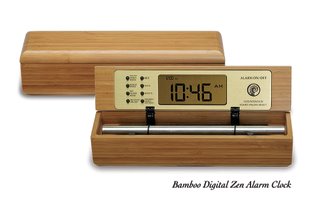 Meditation Timer and Calming Chime Alarm Clock adapted for naturalhealthmag.com by Dorothy Foltz-Gray
Now & Zen – The Chime Meditation and Alarm Clock Shop
1638 Pearl Street
Boulder, CO 80302
(800) 779-6383
Posted in mindfulness practice
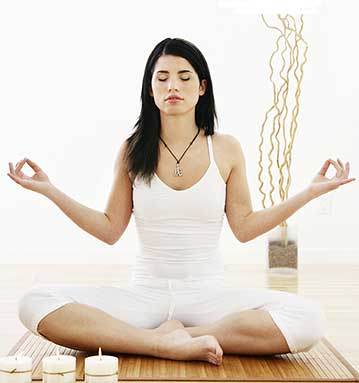 Meditation for Insomnia If you’re tossing and turning and having trouble getting a good night’s sleep, you may want to consider meditation, researchers suggest.
People with primary insomnia reported that they slept better after trying meditation, according to a new study to be presented June 9 at SLEEP, the annual meeting of the Associated Professional Sleep Societies, in Seattle.
Primary insomnia is described as difficulty getting to sleep or staying asleep over a time period of at least one month, according to the U.S. National Institutes of Health.
While most insomnia occurs along with another physical or mental illness or disorder, or as a side effect of medications or other substances, primary insomnia occurs on its own.
In the study, researchers divided 11 participants aged 25 to 45 with chronic primary insomnia into two groups. One group participated in Kriya Yoga — a form of meditation that helps an individual focus internalized attention and can reduce arousal — as well as health education.
The other group received information about improving health through exercise, nutrition, weight loss and stress management but did not participate in meditation.
After two months, the meditation group reported improvements in sleep quality, how long it took to get to sleep, total sleep time, total wake time, sleep efficiency and depression, the researchers reported.
Primary insomnia is believed to be a problem of hyperarousal, with high levels of arousal noted 24 hours a day, said lead study author Dr. Ramadevi Gourineni, director of the insomnia program at Northwestern Memorial Hospital in Evanston, Ill.
“Results of the study show that teaching deep relaxation techniques during the daytime can help improve sleep at night,” Gourineni said in a news release from the American Academy of Sleep Medicine.
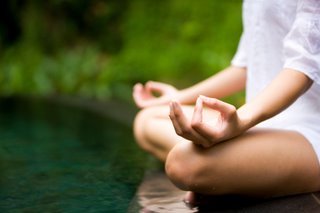 Meditation Pose for Insonmnia About 9.4 percent of U.S. residents, or an estimated 20 million people, try meditating during a 12-month period, according to a 2007 study by the National Center for Complementary and Alternative Medicine. People reported using meditation for various health problems, including anxiety, pain, depression, stress and insomnia.
A 2007 review of the scientific literature found some evidence that meditation is associated with health benefits, possibly by causing heart rate and breathing to slow, improving blood flow and reducing activity in the sympathetic nervous system (the body’s fight-or-flight mechanism).
Our unique “Zen Clock” features a long-resonating acoustic chime that brings the meditation session to a gradual close, preserving the environment of stillness while also acting as an effective time signal. The Digital Zen Clock can be programmed to chime at the end of the meditation session or periodically throughout the session as a kind of sonic yantra. The beauty and functionality of the Zen Clock/Timer makes it a meditation tool that can actually help you “make time” for meditation in your life.
More information
The National Center for Complementary and Alternative Medicine has more on meditation and health.
SOURCE: American Academy of Sleep Medicine, news release, June 9, 2009
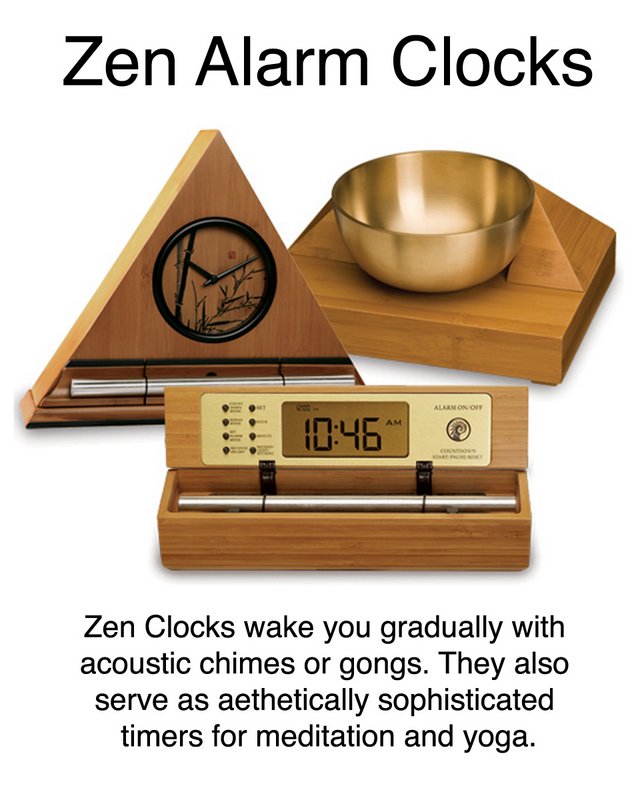 Practitioners usually employ a quiet, tranquil space, a meditation cushion or bench, and some kind of timing device to time the meditation session. Now & Zen – The Chime Meditation and Alarm Clock Shop
1638 Pearl Street
Boulder, CO 80302
(800) 779-6383
Posted in Meditation Timers, Meditation Tools, mindfulness practice
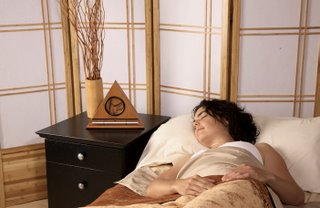 Sleep Issues Sleep Statistics
In 2008 the Centers for Disease Control and Prevention set out to learn just what determines how much sleep Americans get. The lowdown from the survey’s 403,981 respondents follows.
Women are more likely than men to get an insufficient amount of sleep. The results were 12.4 percent of women surveyed versus 9.9 percent of men.
Work helps you sleep. People who are employed get more rest than those who aren’t. But retirees get more sleep than either of those groups. (Only 9.5 percent of retired respondents reported not getting enough z’s.)
More education = more sleep. People with a college degree snooze more than those without a high school diploma or a GED.
Married and single people sleep roughly the same amount. But being divorced, widowed, or separated increases your likelihood of insufficient sleep.
Where you live affects your sleep. West Virginia has the highest rate of sleeplessness—more than 19 percent of respondents. For more sufficient sleep, head to North Dakota, where only 7.4 percent reported inadequate sleep.
The good news? The older you grow, the more likely you are to get enough sleep. People over the age of 65 reported the lowest percentage of insufficient sleep.
adapted from RealSimple.com
 Zen Alarm Clocks Contribute to Good Sleep Habits Now & Zen Alarm Clock Store
1638 Pearl Street
Boulder, CO 80302
(800) 779-6383
Posted in Meditation Tools, mindfulness practice, Natural Awakening, sleep, Sleep Habits, wake up alarm clock
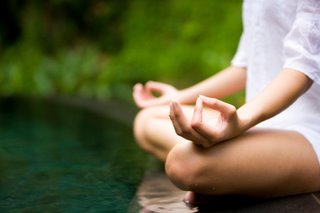 Meditation Problem: You are Tired All the Time
Culprit: Your Adrenal Glands
They’re responsible for secreting the fight-or-flight hormones adrenaline and cortisol, which surge as a response to stress—whether the prehistoric-days type, like being chased by a tiger, or the modern-day version, like financial worries or your mother-in-law. But when you’re feeling stressed all the time, those glands may become overworked and can tire out—a condition commonly called adrenal fatigue, says Keenan. The inability to secrete enough cortisol during the day can cause energy dips, then spikes at night that can interfere with restful sleep.
To give your adrenal glands a chance to recharge, Keenan recommends meditation, which she thinks of as parking the body in neutral. “Meditation has the effect of slowing down the production of cortisol for a while,” she says. Try sitting quietly and clearing your mind. Set your Zen Clock for at least five minutes a day and increase until you are able to sit comfortably for 20 minutes each day. Vitamins B5 and C have also been shown to support adrenal function, says Jacob Teitelbaum, the Kona, Hawaii–based medical director of the Fibromyalgia & Fatigue Centers and the author of From Fatigued to Fantastic!. He recommends getting at least 50 milligrams of B5 and 500 milligrams of C daily. Other stress-reduction techniques work well, too. “Exercise is particularly effective,” says Park.
adapted from RealSimple.com
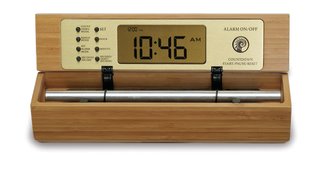 Meditation Tools and Timers by Now & Zen, Inc. Now & Zen Meditation Tool Store
1638 Pearl Street
Boulder, CO 80302
(800) 779-6383
Posted in Chime Alarm Clocks, intention, Meditation Timers, Meditation Tools, mindfulness practice
 Harunobu Suzuki, A girl Collecting Cchrysanthemum Dem by the Stream Culprit: The Blues
Research has indicated that people with depression may be four times more likely than the nondepressed to experience unexplained fatigue. Aerobic exercise—specifically, 30 minutes or more three to five days a week—is effective at treating mild to moderate depression, and may minimize the sleepiness associated with it. Set your Zen Timer for 30 minutes and try a few yoga poses in the comfort of your own home. If that doesn’t help, however, speak to your doctor, who may recommend talk therapy or a mood-boosting medication, like a selective serotonin re-uptake inhibitor (SSRI). If your depression and related fatigue seem to strike more frequently in winter, you could have seasonal affective disorder (SAD). Treatment for SAD may include using a special light box, says Marla Wald, a psychiatrist at Duke University Medical Center, in Durham, North Carolina. But venturing outside for about 20 minutes a day can provide similar benefits, she says.
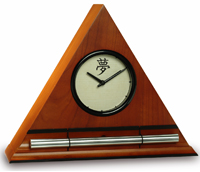 banish the blues by setting your zen timer Now & Zen Headquarter Store
1638 Pearl Street
Boulder, CO 80302
(800) 779-6383
Posted in Chime Alarm Clocks, mindfulness practice, Zen Alarm Clock, Zen Timepiece by Now & Zen
 Butterflies Plate #21, Natural History of Britain on the patio
the afternoon drifts along
with the butterfly.
– Patricia J. Machmiller
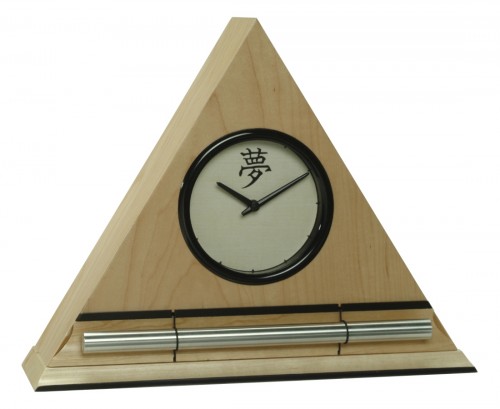 Maple Dream Kanji Zen Alarm Clock, progressive chime alarm clock
Now & Zen – The Zen Alarm Clock Store
1638 Pearl Street
Boulder, CO 80302
Posted in Beauty, Japanese Inspired Zen Clocks, Japanese Poetry, Meditation Timers, Meditation Tools, mindfulness practice, Now & Zen Alarm Clocks, Progressive Awakening
 time your walking meditation with the Digital Zen Timer by Now & Zen, Inc. Ways to Relive Stress:
Get rid of nervous tension by inhaling as you take four steps, then exhaling for four steps. Repeat for at least three minutes (the longer, the better). Work up to six to eight steps per inhale and exhale. Use your Digital Zen Timer on the ‘Repeat Mode’ so that it will chime every three minutes to time yourself.
Now & Zen Headquarter Store
1638 Pearl Street
Boulder, CO 80302
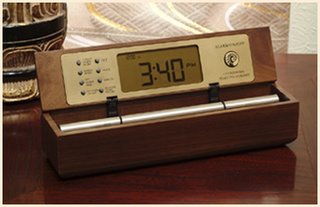 Timers and Alarms with Chimes
Posted in Chime Alarm Clocks, Meditation Timers, Meditation Tools, mindfulness practice, nature, Now & Zen Alarm Clocks, Yoga Timer, Zen Alarm Clock
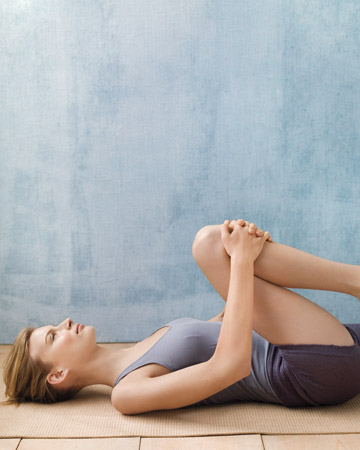 Time your exercise each day and sleep better An early-evening workout may help you sleep. A study from Northwestern University, in Chicago, showed that insomniacs who did about 40 minutes of moderate cardio between 1 p.m. and 7 p.m. four times a week got an average of 75 more minutes of sleep a night. Set your Digital Zen Clock/Timer for at least 20 minutes. Choose an easy routine and finish two hours before bed, says Kori Malyszek, a coordinator for the Equinox Fitness Training Institute, in Los Angeles.
adapted from RealSimple.com
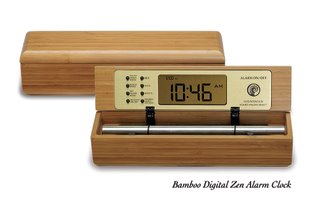 Bamboo Digital Zen Timer and Alarm Clock Now & Zen
1638 Pearl Street
Boulder, CO 80302
(800) 779-6383
Posted in Bamboo Chime Clocks, mindfulness practice, Now & Zen Alarm Clocks, Well-being
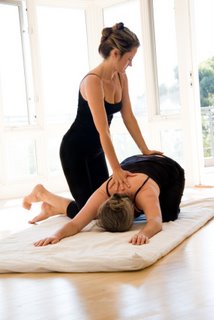 yoga to calm your mind Yoga is a great way to deal with stress—and research backs it up. According to a recent study by the Boston University School of Medicine, any variety of yoga may increase brain levels of the neurotransmitter gamma-aminobutyric acid (GABA), which is associated with relaxation and lowered anxiety. If you’re struggling with an anxiety disorder, try easing it with restorative yoga—the kind that uses pillows or blankets to support your body and allow you to relax deeply in every pose.
A good source for restorative poses is Relax and Renew: Restful Yoga for Stressful Times (Rodmell Press, 1995) by Judith Hanson Lasater. Other helpful poses, says Bo Forbes, founder of the Boston-area Center for Integrative Yoga Therapeutics, include Supported Child’s Pose and Supported Reclining Twist. Practice in a dim, quiet room to cut down on sensory stimulation, and use two-to-one breathing: exhaling for twice as long as you inhale.
For even better results, follow your restorative practice with eight to ten minutes of relaxed, even breathing from your diaphragm (be sure to set your Zen Yoga Timer so that you know when to end your practice), suggests yoga expert Rolf Sovik, Psy.D., director of the Himalayan Institute in Buffalo, N.Y., and author of Moving Inward: The Journey to Meditation (Himalayan Institute Press, 2005). “Breathing calms the nervous system and decreases the impact of anxiety.”
The perfect position for relaxed breathing is Crocodile Pose, Sovik adds. If you have a blanket, roll it into a “Tootsie Roll” shape, fold that into a long horseshoe, and prop it so when you lie on it, chest down, the round end is under your chin and the sides are propping up your chest. A pillow can go under your forehead. This should allow your abdomen to remain relaxed, your lower back to rise and fall, and your rib cage to move freely. Set your Yoga Timer from Now & Zen to chime in five minutes and continue your breathing until it sounds.
adapted from Natural Solutions Magazine, November 2007 by Ben Kallen
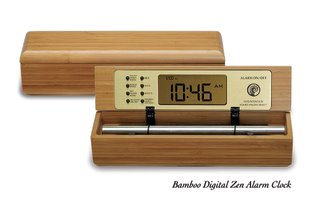 Zen Yoga Timer in Bamboo with Natural Acoustic Chime Our Yoga Timer with Chime also serves as a countdown and interval timer for yoga, meditation, bodywork, etc.; and it can also be set to chime on the hour as a tool for “mindfulness.”
Now & Zen’s Yoga Timer Store
1638 Pearl Street
Boulder, CO 80302
(800) 779-6383
Posted in intention, mindfulness practice, Well-being, yoga, Yoga Timer, Yoga Timers by Now & Zen
« Previous Page — « Previous Entries
Next Entries » — Next Page »
|
|
|
|